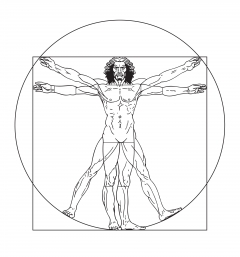

  | Atlas is the first cervical vertebra (or C1) and is named after the giant from the Greek mythology (atlas-ατλας) who had to carry the celestial sphere on his shoulders. Similarly the atlas carries the weight of the skull (4-6 kg). |
  | An extensive research confirmed that the atlas is more or less in a rotational malposition in almost all humans. Correct position of the atlas promotes:* correct structure and function of the musculoskeletal system; * correct posture; * optimal physical and mental performance; * regeneration of the body and auto-correction of the vertebrae, even after injuries; * optimal nervous communication and vascular flow betwenn head and body; * correct management of the organism as a whole. |
  | The atlas not carries only the skull, but also constitutes suspension, balance and guidance of the spine and the human skeleton. |